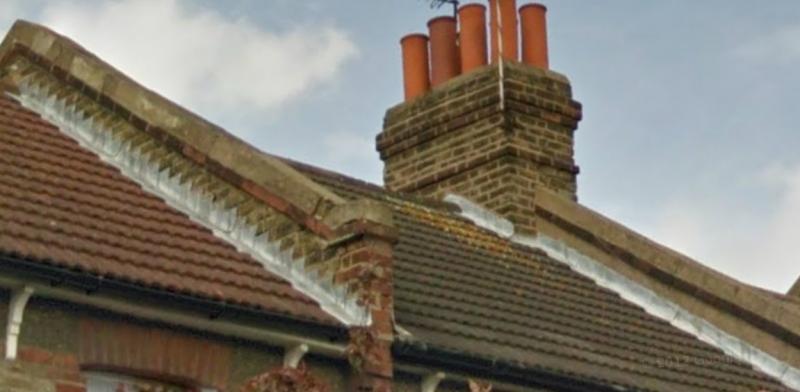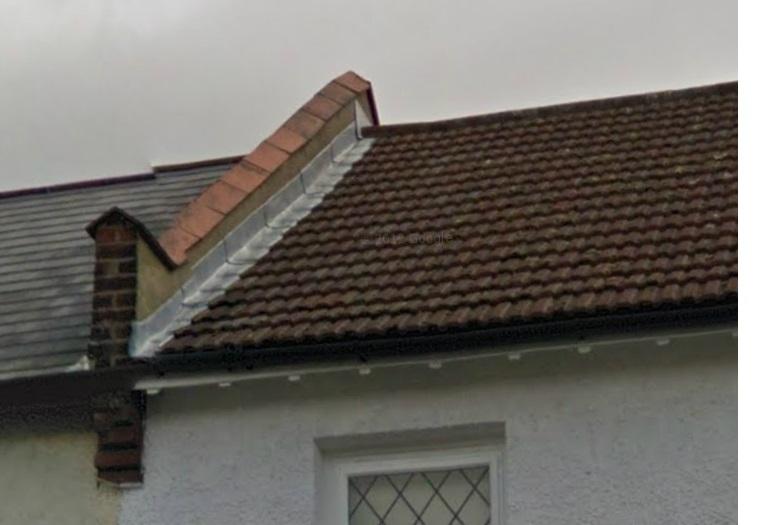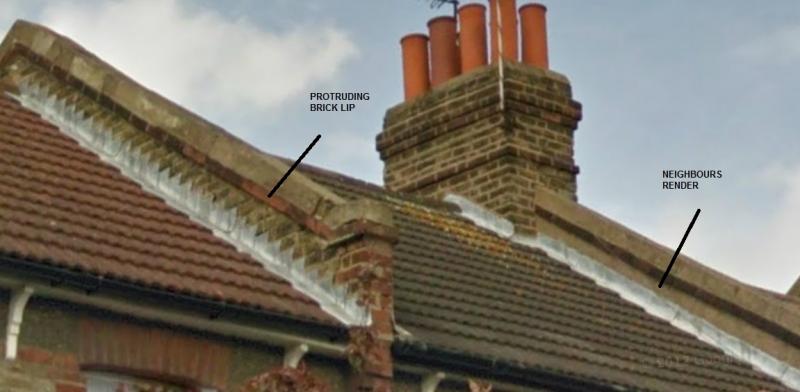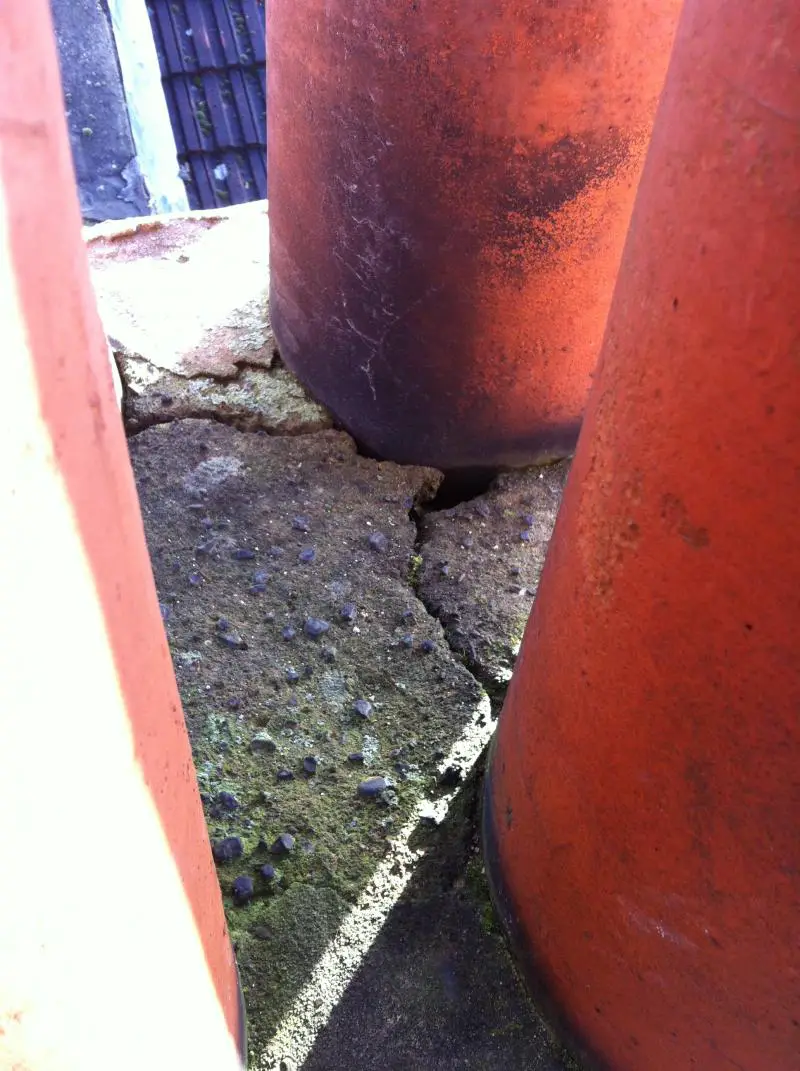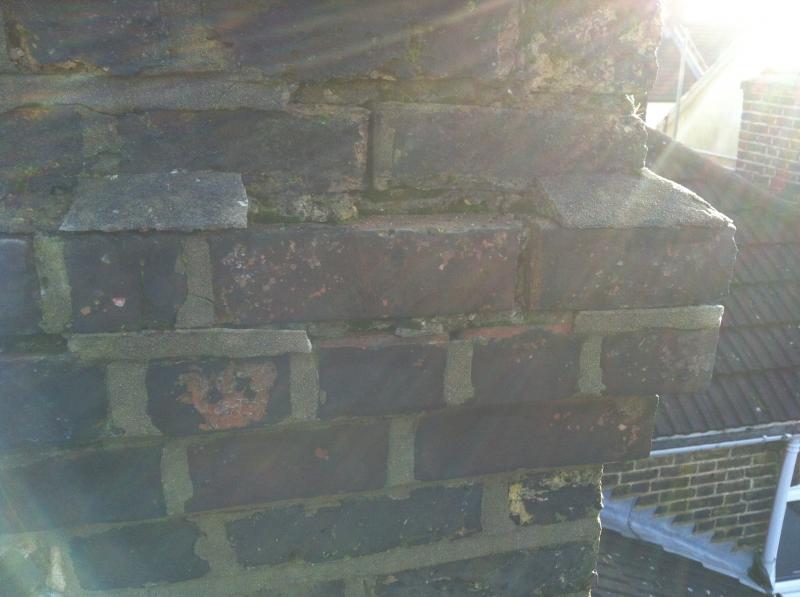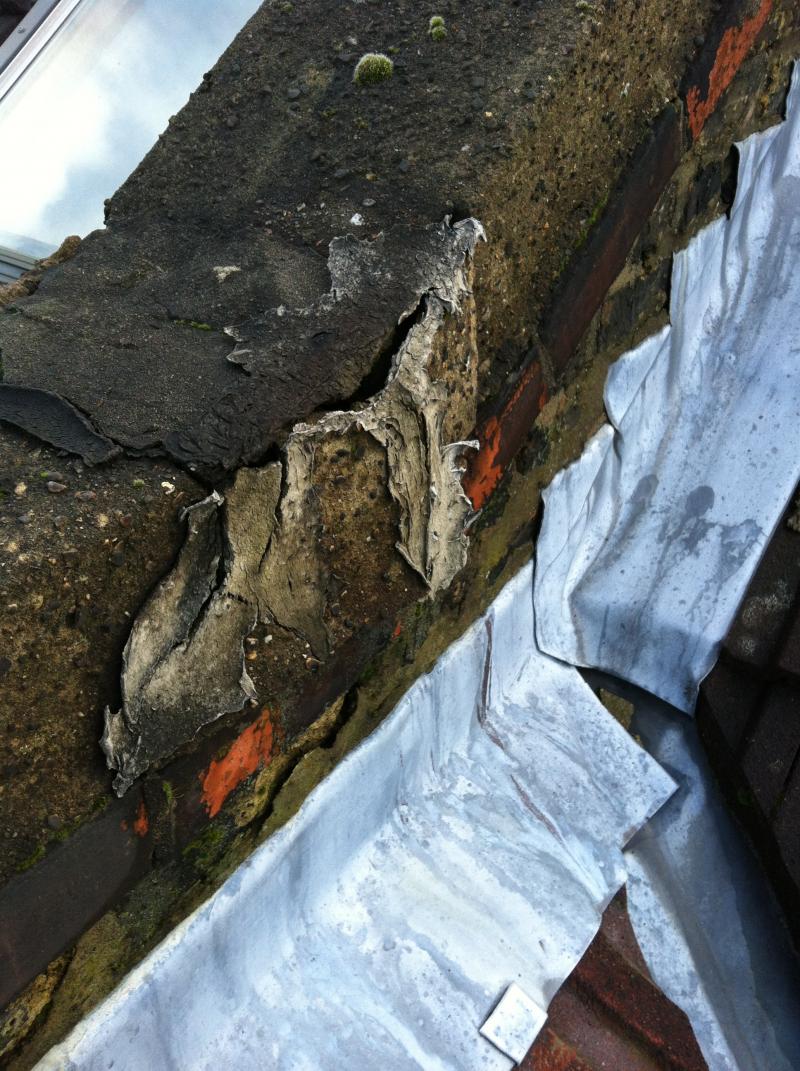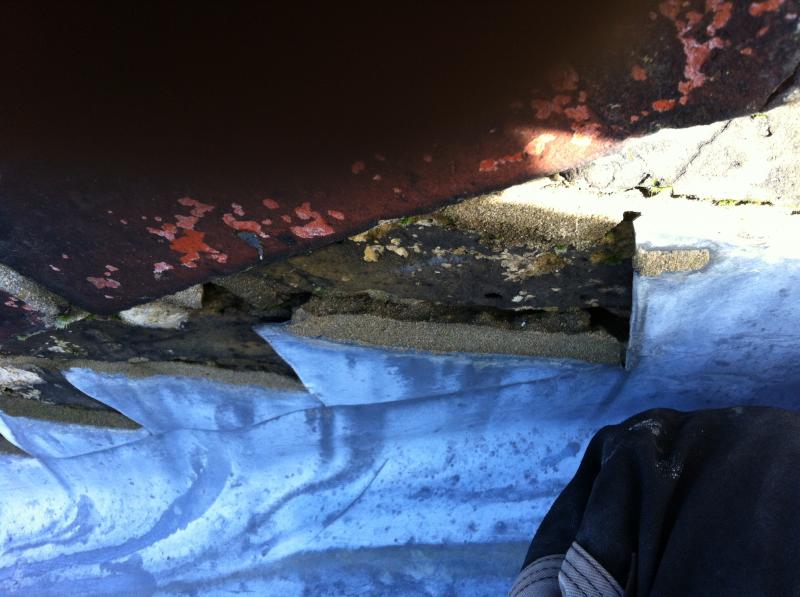Happy New Year all,
I was in the loft earlier today, stashing all the pointless junk that my family have bought me over Christmas and got a bit of a shock when I saw the rafter closest to the party wall (Vic terrace) was soaked, as were the first 2 courses of bricks as you moved down the pitch of the roof. After yesterdays terrible weather I was hoping that it was as simple as a tile blown off but no such luck .... after dusting off the ladders and roping in my brother as dead weight (something he's become very good at over Christmas), I climbed up and saw a few problems. I'm by no means a pro but I'll have a go at explaining what I could see and any advice on how best to repair would be great. The attached picture shows my roof with the terracotta tiles and my neighbours with the darker tiles.
http://media.diynot.com/170000_169334_71029_57582872_thumb.jpg
1/ The render on the top of the parapet wall is cracked/blown in some parts.
2/ Some of the mortar where the lead is bedded in between brick courses has crumbled and so the flashing is loose.
I noticed that the neighbours flashing doesn't look stepped like mine and they have a render down to the flashing. Can someone explain if the render covers the top of their flashing or do they have a flashing that isn't bed into the bricks and therefore the render above the flashing acts as lip to stop water ingress where the flashing meets the brick? Hope that makes sense!
Would it also be an idea to set some coping stones or tiles on top of the parapet wall, a lot of my neighbours seem to have these?
Like I say, I'm no pro but I'm fairly handy and don't mind spending a day or two with a hot flask and a packet of digestives sorting it out rather than forking out for a proper pro!
I was in the loft earlier today, stashing all the pointless junk that my family have bought me over Christmas and got a bit of a shock when I saw the rafter closest to the party wall (Vic terrace) was soaked, as were the first 2 courses of bricks as you moved down the pitch of the roof. After yesterdays terrible weather I was hoping that it was as simple as a tile blown off but no such luck .... after dusting off the ladders and roping in my brother as dead weight (something he's become very good at over Christmas), I climbed up and saw a few problems. I'm by no means a pro but I'll have a go at explaining what I could see and any advice on how best to repair would be great. The attached picture shows my roof with the terracotta tiles and my neighbours with the darker tiles.
http://media.diynot.com/170000_169334_71029_57582872_thumb.jpg
1/ The render on the top of the parapet wall is cracked/blown in some parts.
2/ Some of the mortar where the lead is bedded in between brick courses has crumbled and so the flashing is loose.
I noticed that the neighbours flashing doesn't look stepped like mine and they have a render down to the flashing. Can someone explain if the render covers the top of their flashing or do they have a flashing that isn't bed into the bricks and therefore the render above the flashing acts as lip to stop water ingress where the flashing meets the brick? Hope that makes sense!
Would it also be an idea to set some coping stones or tiles on top of the parapet wall, a lot of my neighbours seem to have these?
Like I say, I'm no pro but I'm fairly handy and don't mind spending a day or two with a hot flask and a packet of digestives sorting it out rather than forking out for a proper pro!


